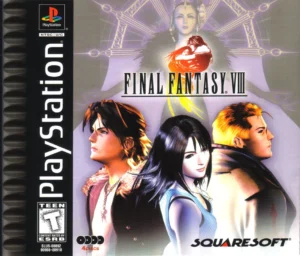Retro Replay Review
Gameplay
Puyo Puyo Fever 2 builds upon the addictive puzzle mechanics of its predecessor by introducing deeper strategic layers and new systems that keep long-time fans and newcomers alike glued to the screen. Players still drop pairs of colored puyos into a grid, looking to link four or more in matching colors to clear them. Chain reactions remain the key to victory, but Fever 2’s enhancements—such as the revamped fever meter and the new ranking system—add fresh incentives for planning complex combos and outsmarting opponents.
The fever meter returns from the first Fever title, but with a twist: filling it not only triggers preset fever boards that simplify combo creation, it also influences the quantity and type of garbage puyos you send to your rival. This dynamic pushes players to balance risk and reward, choosing whether to build huge chains for massive disruption or to chip away steadily to maintain pressure. Additionally, the ranking system rewards successful chains with in-game currency, which can be spent on special items that alter play rules—everything from accelerating puyo drop speed to temporarily locking certain colors.
Single-player Arcade Mode offers a streamlined progression of increasingly difficult CPU opponents, perfect for casual fans or anyone wanting to brush up their chain-building skills. For those seeking narrative context, Story Mode unfolds across three distinct campaigns, each led by a different protagonist. Here, you’ll encounter unique stage gimmicks, boss battles and branching dialogue that lightens the tone between matches. With local versus and online multiplayer still intact, Fever 2 remains an excellent party game and competitive puzzle experience.
Graphics
Puyo Puyo Fever 2 sports a vibrant anime-inspired art style that feels both playful and polished. Character portraits and animations are richly detailed, with expressive reactions that lend personality to every victory and defeat. Stages are presented as colorful backdrops—ranging from frosty mountain slopes to neon-lit city streets—that shift subtly as you clear puyos, keeping the visual experience fresh throughout long play sessions.
Technical performance is rock-solid, with smooth 60-frame-per-second gameplay that ensures puyo pieces fall and clear without any distracting frame drops. Special effects, such as the swirling flair of a large chain or the explosive burst of garbage puyos, are well animated and help convey the impact of your combos. The UI is clean and intuitive, making it easy to track both your fever meter and your opponent’s status at a glance.
Minor touches—like customizable color palettes for puyos and character outfits—allow players to tailor the look to their personal taste. While the game doesn’t push graphical boundaries in terms of 3D complexity, its charming 2D sprites and backgrounds remain true to the series’ arcade roots. Overall, Fever 2’s visuals elegantly balance clarity, style, and performance on modern consoles and handhelds.
Story
Although Puyo Puyo is best known for its quick-fire puzzle action, Fever 2’s Story Mode offers a surprisingly engaging narrative framework. You can choose between three protagonists—each with their own motivations, rivals, and colorful supporting cast—and embark on separate campaigns that wind through a lighthearted, anime-style adventure. Dialogue scenes are fully voiced (in the original Japanese or localized English), adding a fun dimension to the encounters between matches.
Each campaign features multiple “story battles,” interspersed with cutscenes that develop character relationships and set up unique puyo challenges. From comedic misunderstandings between friends to more dramatic face-offs against powerful adversaries, the story mode injects personality into what could otherwise be a purely mechanical experience. Boss stages often come with special rules or obstacle puyos, forcing you to adapt your strategy on the fly.
While the overarching plot is straightforward—friends and rivals competing to prove who is the ultimate puyo master—the charm lies in the individual character interactions. Side characters occasionally break the fourth wall or provide tongue-in-cheek commentary on puzzle tropes, making the story mode a delightful palate cleanser between intense puzzle duels. Fans of the series will appreciate returning faces, and newcomers will find enough narrative hooks to stay invested.
Overall Experience
Puyo Puyo Fever 2 strikes a fine balance between accessibility and depth, making it an ideal purchase for puzzle veterans and casual players alike. The core mechanics are intuitive—drop, match, chain—yet the addition of fever boards, a dynamic garbage system, and purchasable power-up items ensure there’s always a new layer of strategy to explore. Matches remain fast-paced and exhilarating, whether you’re facing off against the AI or a human opponent online.
The wealth of content on offer—single-player Arcade Mode, three full Story Mode campaigns, local versus, online multiplayer, and a training mode—means you’ll rarely run out of challenges. The ranking system encourages replayability as you hunt down the best items to customize your playstyle, and new leaderboards give puzzle enthusiasts added incentive to refine their chain-building techniques. Plus, the charming presentation and upbeat soundtrack keep spirits high even after long sessions.
Overall, Puyo Puyo Fever 2 is a worthy sequel that revitalizes classic puzzle gameplay with fresh mechanics and engaging modes. Its vibrant graphics, addictive chain-reaction gameplay, and lighthearted story elements come together to deliver a polished package. Whether you’re looking for quick pick-up-and-play fun or a deep competitive experience, Fever 2 offers something for every puzzle fan.
 Retro Replay Retro Replay gaming reviews, news, emulation, geek stuff and more!
Retro Replay Retro Replay gaming reviews, news, emulation, geek stuff and more!




Reviews
There are no reviews yet.